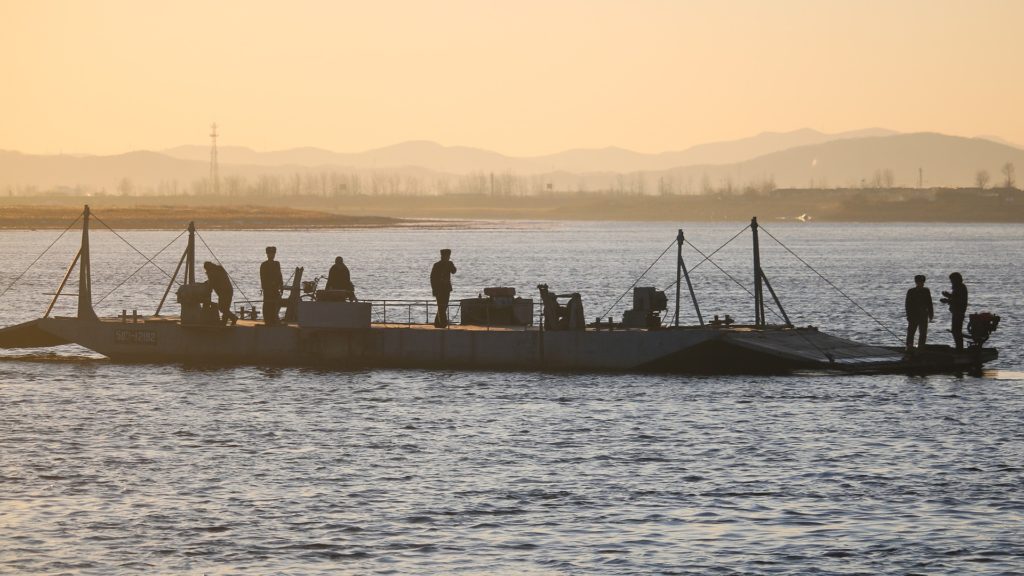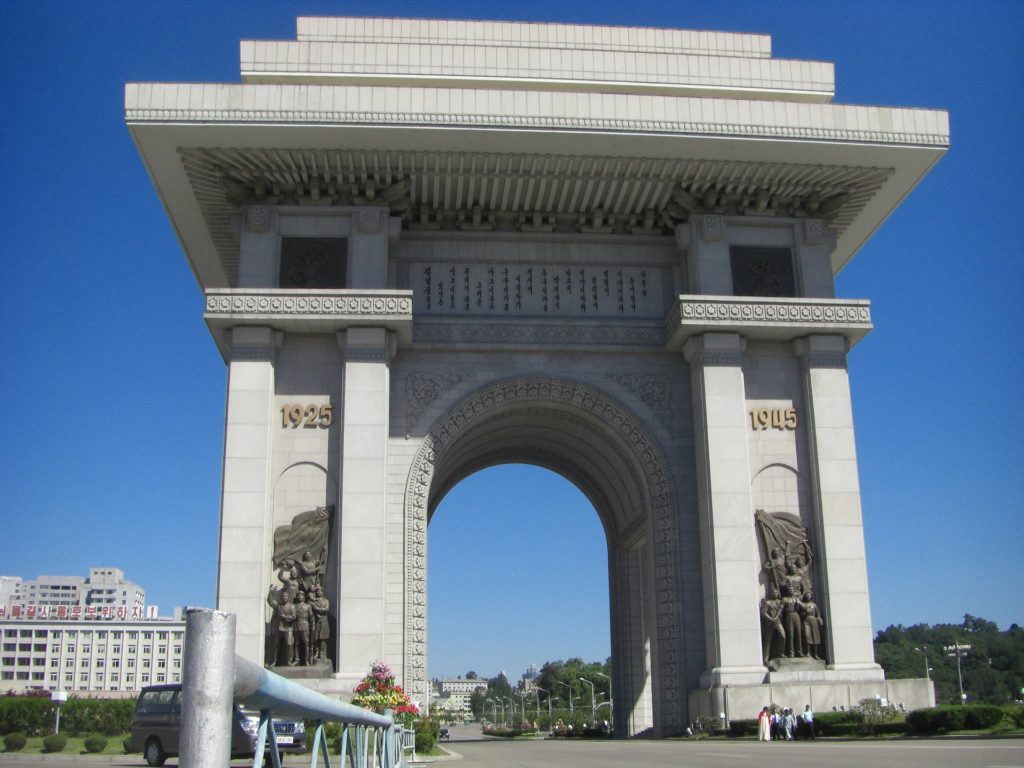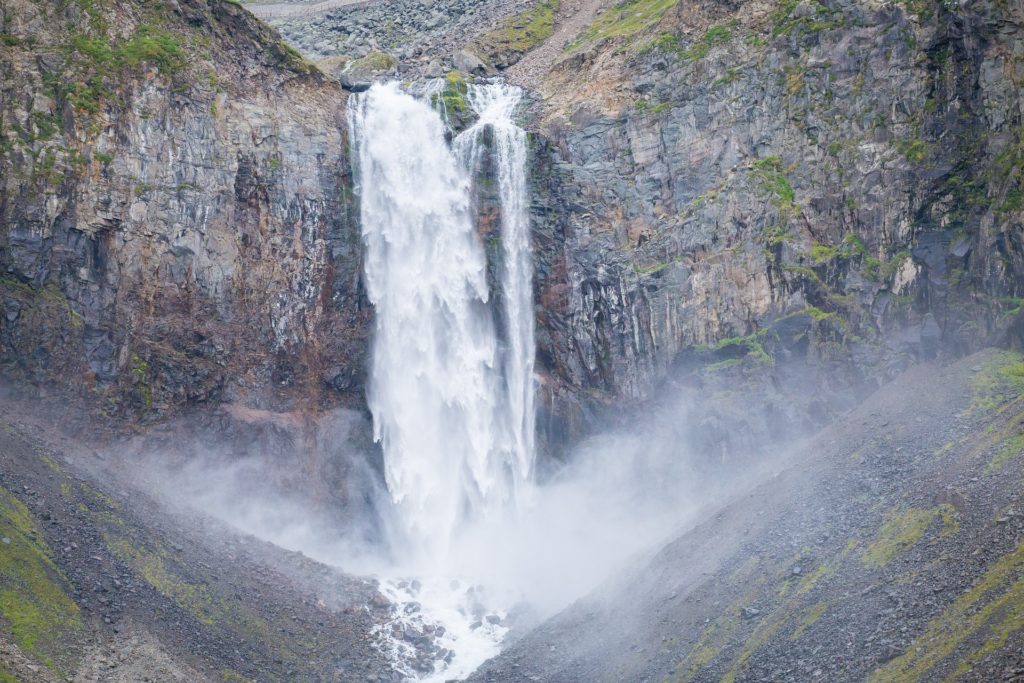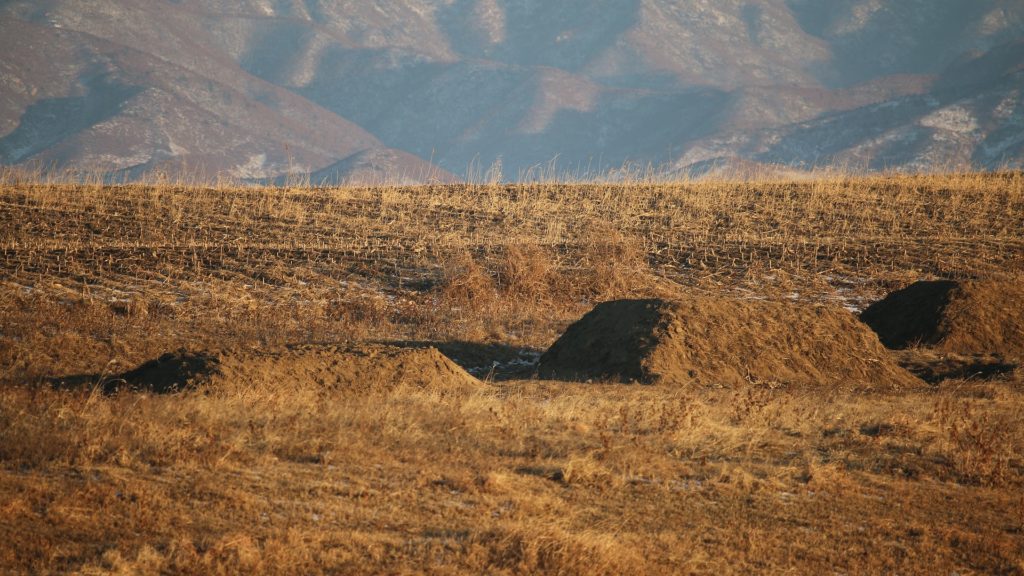Backpacking in North Korea
The Democratic Republic of North Korea has existed since 1948, when the Korean peninsula was ruled by states that included the entire peninsula in their territory. The emergence of North Korea is a direct consequence of the Second World War: after the end of the war, the peninsula was divided into an American and a Soviet occupation zone. As a result, two Koreas emerged – a process not entirely unlike the German-German division. Only North Korea continues to exist as a state even after the collapse of the Soviet Union and is today considered the most strictly sealed off country in the world. This is what makes backpacking in North Korea so interesting and charming. In addition, there is an impressive landscape that is anything but overcrowded in terms of tourism.
North Korea was originally a Marxist-Leninist communist state. Today North Korea sees itself as a socialist state. Since 1977, Marxism-Leninism has been replaced by the Chuch’e ideology, which was developed by state founder Kim Il-Sung. Since 2009, the military has increasingly been the focus of attention. This is the central idea of the Sŏn’gun policy, which gained importance under Kim Jong-Il.
The decisive factor for understanding the current North Korean conflict is that the two Koreas do not recognize each other. Both consider themselves to be the only legitimate Korean state. This led to the Korean War between 1950 and 1953. The division of the country and the underlying conflict still exist today. The West, too, faces North Korea cryptically. This is strongly represented in particular by the USA.
The conflict between North and South Korea, but also between North Korea and Western countries, especially the USA, regularly threatens to escalate. The main reason for this is the nuclear programme, on which North Korea is working hard. While the West sees this as a threat, North Korea sees it as a preventive measure to protect itself against the threat from the West (especially the United States).
The Korean peninsula is thus one of the most important trouble spots in the world, alongside the Middle East. Of course, you should always keep this in mind when planning your trip to North Korea.
Economy in North Korea
It is virtually impossible to obtain reliable and up-to-date data on North Korea’s economy. Official data of the country does not exist. The North Korean economy continues to be organized according to a planned economy. According to South Korean calculations, the North Korean economy has grown again, with a GDP growth of 3.9% in 2016.
Refugees report increasing private trade. Satellite images show that market areas in cities such as Pyongyang have increased in recent years. However, the construction industry is likely to have the greatest influence on economic growth. Agricultural production, on the other hand, is being steadily cut back. The extraction of raw materials has also been reduced. The most important export products are minerals, metal products, armaments as well as agricultural and fishery products.
The per capita income is said to have averaged 1100€ per year (!) (2013). Again and again there are indications of an impoverishment of large parts of the population. Life expectancy is also rather low. For women it is about 72 years, for men only 66 years.
Culture in North Korea
As foreigners, we know little about the culture of North Korea and its developments. Ethnological research is currently not possible, and for travellers contact with North Korean citizens is as limited as possible. That is why we know only what the government wants about the culture of this country. That is surely a pity, because just by the fact that the country is so isolated, there are certainly still many cultural peculiarities to discover here.
Ethnologically speaking, North Korea would undoubtedly be interesting. Especially as there is so little contact to the outside world, many cultural peculiarities might have been preserved. For example, access to mobile phones and the Internet is very limited or even non-existent, so that there is hardly any access to information from or about foreign countries.
The few reports from people who have been in North Korea for a long time paint a picture of a poor but positive thinking population that is strongly organised in a community. For them, the political conflict is something that has little to do with people. They see South Koreans as part of their own family; they have no grudge against Americans either. Rather, they see it as a problem that one government has with another – independent of the people who live in those states.
North Korea is not a strongly religious country. Most North Koreans are Buddhists or Confucianists. There is also a strong Christian minority in Pyongyang. However, there are contradictory statements about their size and status. While Christian organizations repeatedly speak of persecution of Christians, new Christian churches have also been built in recent years.
One of the major cultural events in North Korea, of course, is the annual Arirang Festival, named after a folk song. More than 100,000 people come together here for carefully conceived mass choreographies, mostly illustrating revolution-related themes or praising the present of North Korea. Since 2007, the Arirang Festival has been the largest of its kind in the Guinness Book of the World. The festival usually takes place twice a year, in spring and autumn. At these times South Koreans are also allowed to enter North Korea. In any case, the Arirang Festival is a very special experience if you have the chance to attend it.
For a long time the North Korean film was regarded as one of the special cultural branches of North Korea, even though the interest in it seems to have fallen asleep again. The film industry had caused a sensation with the production “The Flower Girl”, which was awarded the special prize at the 18th International Film Festival Karlovy Vary in 1972. The vast majority of films produced in North Korea are currently those whose themes and contents emphasize the advantages of the political system and life in North Korea in general.
What one can discover in North Korea in any case, however, are the traces of the older history. Due to the historically grown importance of Buddhism, there are also numerous Buddhist temples to visit. In addition, there are many archaeological sites with finds from earlier periods of settlement on the Korean peninsula, including the Goryeo dynasty sites in Kaesong, which are part of the UNESCO World Heritage Site.
Backpacker Budget in North Korea
To anticipate this right away: Travel to North Korea is expensive. The reason is that only organized trips including travel companions are possible. Daily budgets can’t really be given here, as I usually include everything in the booked tours – from accommodation and transport to meals.
This has the advantage that you can calculate very accurately. A lot of additional budget is actually not necessary anymore, except for smaller pleasures of everyday life like shopping in the local supermarket.
Car hire in North Korea
You cannot rent a car separately in North Korea – a minibus or car, depending on group size, is already included in the tour, including driver.
Public transport in North Korea
The use of public transport in North Korea is largely non-existent for travellers. Only the metro in Pyongyang and recently a railway line to the east coast are usually part of tourist trips.
Rail travel in North Korea
Underground travel in Pyongyang is often part of a tour of the capital. However, the subway is usually the destination and not the means of transport. Nevertheless, there are two lines that roughly run through the city in a north-south and east-west direction. Unlike most metro systems, the stations are not named after places, but with a few exceptions after revolutionary themes.
Backpacker Route in North Korea
As already mentioned: Backpacking in North Korea does not really exist. They are always organized trips, either in a group or for you as a private trip individually designed trips. The largest providers in Germany are Pyongyang Travel and the Korea Travel Service. However, there are a number of other organizations. The best thing to do is simply ask the prices of several of them and then compare them.
If you would like to experience North Korea a little more individually, it is advisable to book a private trip and put it together according to your own taste. In principle, you also have many choices – you just have to plan everything in advance and always have one or two local companions with you in the country.
The whole thing is problematic above all in terms of price – for a two-week trip you have to plan 3000 to 4000 € per person. Group trips are a bit cheaper, but it’s not cheap either. In addition, you will of course have considerably less room for manoeuvre.
So if you are really drawn to North Korea, it is certainly worth investing the money in a private trip. It is a unique experience – so if you have the budget, invest it well in it!
Route 1: North Korea for those in a hurry (7-10 days)
- 2 days Pyongyang – important sights of the city, Arc de Triomphe
- 1 day Nampo – Taesong Lake
- 1 day Kangso – tombs of the Goguryeo dynasty from the 7th century
- 2 days Kaesong – installations from the Goryeo dynasty (UNESCO world cultural heritage)
- 1 day border to South Korea
- 1 day Pyongyang – Relax, Departure
Route 2: North Korea intensive (approx. 14 days)
- 2 days Pyongyang – important sights of the city, Arc de Triomphe
- 1 day Nampo – Taesong Lake
- 1 day Kangso – tombs of the Goguryeo dynasty from the 7th century
- 2 days Kaesong – installations from the Goryeo dynasty (UNESCO world cultural heritage)
- 1 day – Border to South Korea
- 2-3 days – Mt. Kumgang National Park
- 1 day – Pyongyang
- 3 days – Special Economic Zone Rason
- 1 day Pyongyang – Relax, Departure
Travel Times in North Korea
What makes North Korea’s climate special is that it is more continental in winter, but influenced by the tropical monsoon climate in summer. Accordingly the summers are warm to hot and rainy, with the high humidity typical for monsoon regions. Floods can also occur in summer. North Korea is also affected by typhoons. The winters, on the other hand, are very cold and dry, as Siberian air masses penetrate as far as the Korean peninsula.
The ideal travel time is therefore in May and June or in autumn between September and October. In the short spring and short autumn the temperatures are about 10 to 20°C and are not dissimilar to those in Germany.
Backpacker Trips & Tips in North Korea
As already mentioned: You only have a limited amount of freedom when travelling to North Korea. All destinations have to be agreed and determined in advance with a tour company.
Despite the generally increasing opening of the country for tourists, many areas are still not travelable. But: It becomes always more. Look around in the Internet for good offerers, which arrange you also individual routes. Just ask if your desired destination is reachable.
The most important thing for travelling in North Korea: Always take to heart what your travel companions tell you. Everything else can turn out really badly for you and brings absolutely nothing at all. That your camera and photos are taken away from you is still the most harmless consequence.
So just take the rules to heart – even if this sometimes seems illogical or strange to you. Last but not least it is like this: You are a guest in a country and should, out of respect, follow its rules.
Backpacker Highlights in North Korea
A highlight – and anyway the starting point of every tour through North Korea – is a visit to the capital Pyongyang. The Mangyongdae Native House is one of the main attractions in the immediate vicinity of the capital. Although the little house looks rather inconspicuous, this place is worshipped as a kind of national sanctuary. Kim Il-Sung is said to have been born and raised here. While this place might not be as important for you as it is for North Koreans, the view from here is worth a visit. The view over lush green landscapes and the skyline of the capital is simply breathtaking. By the way: Mangyongdae Native House is just one of a long series of Kim Il Sung monuments that you will visit on your journey, and you should be prepared for that…
There’s a bit of variety and an opportunity to get in touch with the local population to some extent when you visit the North Korean version of Disneyland. This park is also named after Kim Il-Song’s birthplace Mangyongdae and is called Mangyongdae Fun Fair, who was surprised. Admittedly: The use of one or the other old ride has to be carefully considered. Nevertheless, here, with ice cream, merry-go-round and roller coaster, there is a little leisure feeling. Moreover, one actually meets the local population here and sometimes even has the opportunity to interact a little with the people, if the companions allow it. Somewhat unpleasant for western tourists is that one is mercilessly preferred when using the rides. Thus, one quickly gets a whole roller coaster train for oneself, while the North Koreans have to wait further in line.
A real highlight is also the Arc de Triomphe. Wen wanted to surprise that it was constructed in honor of the revolutionary deeds of Kim Il-Songs. However, it is interesting and impressive: Architecturally based on the Arc de Triomphe in Paris, the architecture of the building, which was built in 1982, also shows clear influences of a distinct East Asian-Communist architectural style. This is not the only difference to the Parisian model. The triumphal arch in Pyongyang is also significantly larger: with a height of 60 m, a width of 50 m and a depth of 31 m, it comprises four storeys. (For comparison: The triumphal arch in Paris is only 50 m high).
Backpacker Insider Tips in North Korea
With the insider tips in North Korea, of course, this is something like that. Since there is nothing going on beyond organised tours – or organised individual tours – there are practically no real “insider tips” from which travellers can benefit.
Quite new is that one can drive with regional trains from Pyongyang up to the east coast into the special economic zone Rason. Of course, this is only possible in company and organized. Nevertheless, this three-day tour offers beautiful insights into the breathtaking landscapes that distinguish North Korea. Especially the east coast is very attractive.
In the special economic zone Rason your North Korea experiences from its probably most brilliant side – here North Korea tests, after Chinese model, a piece of capitalism. This region, developed with the help of Russia, Thailand and China, is certainly the most dynamic in the country and definitely worth a visit.
When visiting the capital, you should definitely explore the subway. If you look at the rather brittle charm of the architecture on level ground, you will be surprised which jewels are under the surface. Similar to Moscow, the subway stations of Pyongyang are partly architecturally extremely elaborate and equipped with pictures in the style of socialist realism.
A real highlight that you should plan for is the Mt. Kumgang National Park in the south of the country. One can visit this also problem-free. The drive there is already a small adventure in itself, as the way from Pyongyang goes through a badly ventilated, unlit tunnel of approximately 5 km length. Behind it, a beautiful landscape opens up that will inspire especially photographers. Rugged rocks, waterfalls, a suspension bridge – these are only some of the highlights in this national park. Moreover, the park is only visited a little. This has the disadvantage that the restaurants and park facilities are mostly closed. On the other hand, you can enjoy nature largely undisturbed.
Kaesong in the southwest of the country is also a city worth seeing. Here there are many sites of the Goryeo dynasty to visit that are also part of the UNESCO world cultural heritage since 2013.
Backpacker Accommodation in North Korea
In North Korea – as there is no classical individual tourism possible – the common forms of accommodation like Airbnb or Couchsurfing are not available.
It is also not possible to choose hotels on the Internet or to see the corresponding prices. This is due to the fact that individual trips to North Korea must always be planned in advance. The planning is done by the appropriate travel company – and they also reserve the accommodation. Normally you will therefore sleep in well-equipped middle-class hotels on your tour.
Food & Drinks in North Korea
All in all, the North and South Korean cuisine does not differ very much – they are rather nuances. Like the South Koreans, the North Koreans love kimchi, which they enjoy almost any time of the day or night. This dish made of fermented white cabbage is a bit more spicy in the north than it is usual in South Korea. In general, however, the seasoning of most dishes is milder in the north than in the south – kimchi is rather an exception here.
Food in North Korea
Beside the “Pan-Korean speciality” Kimchi there are also some dishes that are more likely to be found in North Korea than in South Korea. These include cold noodles. These are buckwheat noodles that have a black colour. They are typically served in a clear, cold broth with dried egg and some meat. Optically they are not necessarily appealing, but the impression is deceiving: These so-called Naengmyeon are extremely tasty. (And even a folk love is dedicated to them.)
As in China, one hears from North Korea again and again that dogs are eaten there. This is not wrong, but dog meat is considered a delicacy and is extremely expensive. Therefore dog is only prepared as a feast. Sometimes dog meat is also called “sweet meat”.
By the way, the “Koryo burger”, which is served on board Air Koryo, is notorious as an anti-speciality. It is said that one really only eats it when one is almost starving…
Drinks in North Korea
There is actually no classical, typical North Korean drink. Most likely it is the rice wine, Soju, and its kindred, the Makgeolli. Makgeolli has a lower alcohol content and looks slightly milky. It is more often drunk in rural areas and in Pyongyang it is considered old-fashioned and somehow “uncool”. Soju is therefore consumed in larger quantities. But beer is also very popular. Since 2000 a whole brewery was imported from the UK, there is today’s “national beer” Taedonggang. This beer is available in five varieties, which bear the numbers 1 to 5. They differ essentially according to the ratio between barley and rice as a base. 1 contains only barley, hops and water with minimal added rice, 5 is pure rice beer.
Backpacker Visa and Vaccination in North Korea
Many people shy away from a trip to North Korea because they think it is difficult to get a visa. But that is not the case at all! As a German citizen you will get a visa without any problems. However, it is very important that your travel companions explain to you the rules that you must follow in the country before you enter the country. These rules have to be followed at all costs. Otherwise you will be in real danger – and without any need. Nobody wants to arrest you in North Korea or harm you in any way – and if you stick to the rules, you won’t have any problems with the authorities. In this respect a trip to North Korea is not really dangerous. Only you should pay attention of course first to the “political climate” – if the conflict intensifies acutely, it can be meaningful to shift its journey. The Federal Foreign Office will also inform you about this on its website.
According to the entry regulations of the Federal Foreign Office, the following documents are accepted as travel documents:
- Passport: Yes
- Provisional passport: No
- Identity card: No
- Temporary identity card: No
- Children’s passport: Yes
Your travel document must be valid for at least 3 months from the date of your entry.
The visa can be extended locally in individual cases, if North Korea has an interest in the extension. As this will rarely be the case, you should not rely on it. So it is best to plan your trip so that you see everything you want to see.
North Korea is very careful about which media and electronic devices are brought into the country. You have to expect that your computers, mobile phones, cameras will be searched and unwanted content deleted. Mobile phones will be confiscated unless you have or purchase a North Korean SIM card. For these reasons it is advisable to leave your computer and smartphone at home – you won’t have internet access anyway. Cameras are usually not a problem, but they are of course checked for unwanted pictures when entering and leaving the country.
You should inform yourself about current details of the entry regulations before your departure or before booking directly at the Foreign Office.
Medical Information & Vaccinations for North Korea
There are no mandatory vaccinations for entering North Korea. If you are arriving from a yellow fever region, however, proof of a yellow fever vaccination is required.
Beyond this, it is sufficient to keep the vaccination card up to date and to have appropriate standard vaccinations according to the vaccination calendar of the Robert Koch Institute refreshed if necessary. For longer stays, vaccinations against hepatitis A and B, rabies, typhoid, meningitis (A/CW/Y) and Japanese encephalitis are recommended.
Tuberculosis is still quite common in North Korea. However, as travellers you have little contact with the local population, the risk of infection is very low.
Malaria only occurs sporadically in the south of the country in summer. A corresponding vaccination recommendation does not exist at the moment.
Generally applies: The information situation, which concerns epidemics, is expressed uncertain in North Korea.
Medical care is inadequate throughout the country. There are too few medicines, bandages and medical instruments, so that treatment according to Western standards is not possible. An extensive first-aid kit is therefore the be-all and end-all. More serious illnesses should always be treated in neighbouring countries or in Germany – so it is better to take out a foreign health insurance policy with a return option in case of emergency.






